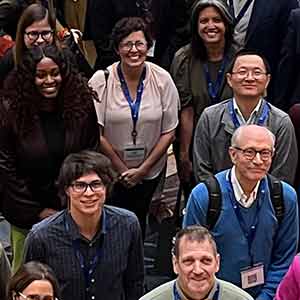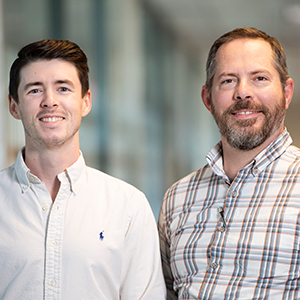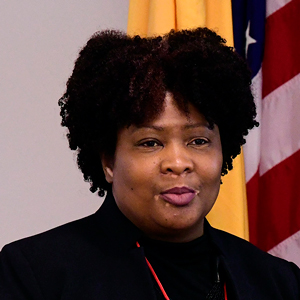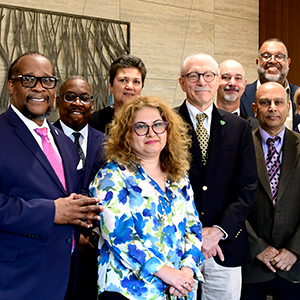This month, we look at how NIEHS fosters research to help reduce environmental injustice and health disparities, and improve environmental health literacy. The SARS-CoV-2 pandemic spotlights these inequities: Black, Native American and Latinx communities have been hit much harder by infection rates and disease severity.
Research in communities disproportionately burdened by chemical and other exposures has uncovered vulnerabilities to noncommunicable diseases throughout the lifespan. In August, we shared that Director Rick Woychik, Ph.D., placed addressing racial inequities at the top of his priority list. This is the second story in a series describing how NIEHS carries out that commitment.
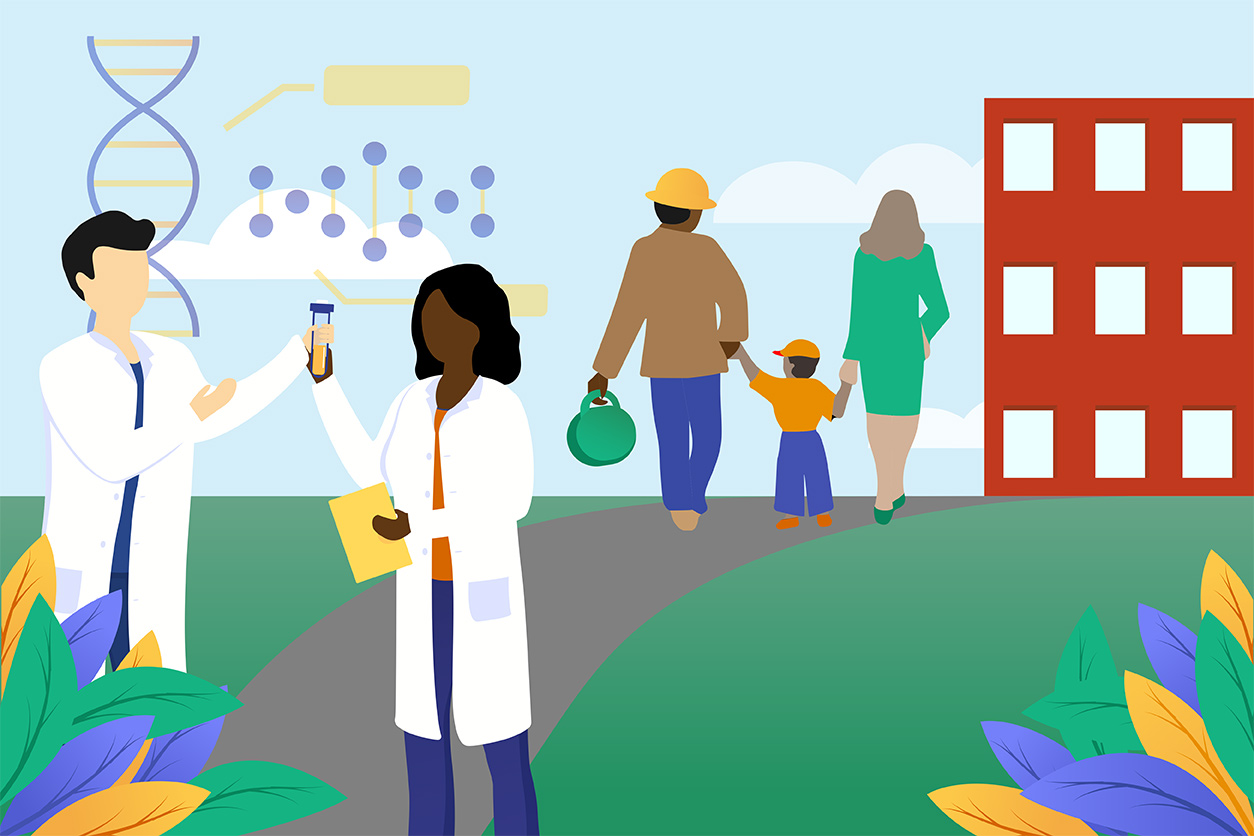
Long-term concern
The NIEHS 2018-2023 Strategic Plan specifically addresses environmental health disparities and environmental justice (EJ). “NIEHS remains committed to uncovering the exposure burdens that combine with other social determinants of health, such as age, gender, education, race, and income, to create health disparities, as well as working to ensure environmental justice,” the plan states.
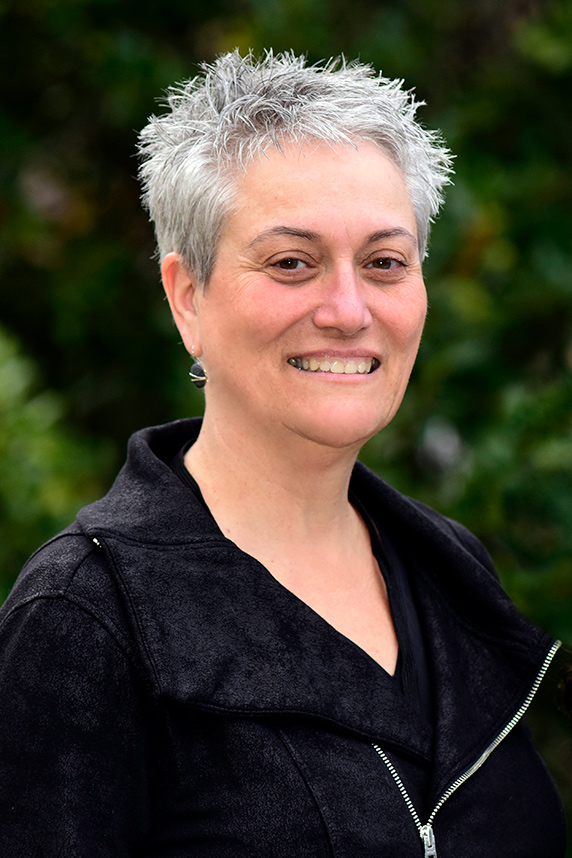 Collman noted that diversity issues among grant recipients and institutions will be discussed at the September NIEHS National Advisory Environmental Health Sciences Council meeting. (Photo courtesy of Steve McCaw)
Collman noted that diversity issues among grant recipients and institutions will be discussed at the September NIEHS National Advisory Environmental Health Sciences Council meeting. (Photo courtesy of Steve McCaw)Over the years, NIEHS has targeted programs to help fulfill the institute’s commitment through several approaches, according to NIEHS Acting Deputy Director Gwen Collman, Ph.D.
“The Partnerships for Environmental Public Health Program [PEPH] fosters a network for research, communication, research capacity building, and project evaluation,” she said. “The network promotes partnerships that take community concerns to researchers and result in public health action and impacts.”
Health disparities research
The Centers of Excellence in Environmental Health Disparities Research encourage study of disease conditions among populations with low socioeconomic status and health disparities. The current round of centers reflect collaboration among the National Institute of Minority Health Disparities and the National Institute of Child Health and Development.
Baylor College of Medicine houses the newest such center, funded just this summer. The Maternal and Infant Environmental Health Riskscape (MIEHR) Research Center is co-led by Baylor's Elaine Symanski, Ph.D., deputy director of the Gulf Coast Center for Precision Environmental Health, and Robert Bullard, Ph.D., from Texas Southern University, sometimes called the father of environmental justice.
MIEHR studies birth outcomes among African American and non-Hispanic white women and the risks they face from natural disasters and chemical mixture exposures to social and built environments.
 Smarr oversees research grants on metabolic syndrome, diabetes, obesity, and environmental epidemiology. (Photo courtesy of Jerry Reid)
Smarr oversees research grants on metabolic syndrome, diabetes, obesity, and environmental epidemiology. (Photo courtesy of Jerry Reid)According to Melissa Smarr, Ph.D., from the NIEHS Population Health Branch, MIEHR scientists at the center also want to better understand mechanisms that link those environments to outcomes such as preterm birth and hypertensive disorders.
Research informs action
NIEHS promotes community-engaged research through its Research to Action program, which requires academics to partner with community members and address an environmental health concern they identify.
“As the name indicates, research must lead to public health action,” explained Liam O’Fallon, PEPH coordinator. “Communities want to see research that values their knowledge and informs action that improves their lives.” He suggested that Gigiigooinaan (Our Fish): A New Advisory to Promote Anishinaabe Health and Wellness, at the Medical College of Wisconsin, exemplifies the importance of this approach.
Anishinaabe communities experience persistent toxic chemical exposures and poor nutrition, which the grantees associated with metabolic and inflammatory diseases, childhood neurological development, and cancer. Academic and Anishinaabe partners test how community members use a mobile app that communicates risk in a culturally appropriate manner. The research team hopes to minimize exposure to chemicals in fish, while enabling the Anishinaabe to maintain their culturally significant fishing practices.
 “We have been addressing environmental justice since 1994, under [then-director] Dr. Olden,” said O’Fallon. “While we have accomplished a lot in 25 years, there is much more left to do.” (Photo courtesy of Steve McCaw)
“We have been addressing environmental justice since 1994, under [then-director] Dr. Olden,” said O’Fallon. “While we have accomplished a lot in 25 years, there is much more left to do.” (Photo courtesy of Steve McCaw)In the Pacific Northwest, the University of Washington’s Catherine Karr, M.D., Ph.D., and her community partners identified environmental factors — pesticides, agricultural dusts, and pollen, for example — that triggered asthma in rural, farm-working populations. The team tests whether portable high efficiency particulate air cleaners in the homes of children with asthma, combined with home-based education, help reduce symptoms.
Worker training
The Environmental Career Worker Training Program (ECWTP) prepares disadvantaged and underrepresented minority workers for careers in environmental restoration, construction, handling hazardous materials, and emergency response. Since 1995, ECWTP has provided pre-employment and health-and-safety training to thousands of people.
A 2015 economic analysis found that graduates had higher earning and employment rates, lower injury rates, along with less quantifiable benefits: “Student interviews done after completing the program discuss the ECWTP’s transformative effect on their lives. A common theme in these stories is an increased attachment to the labor force after training, and an increase in self-worth from having regular employment,” the report states.






